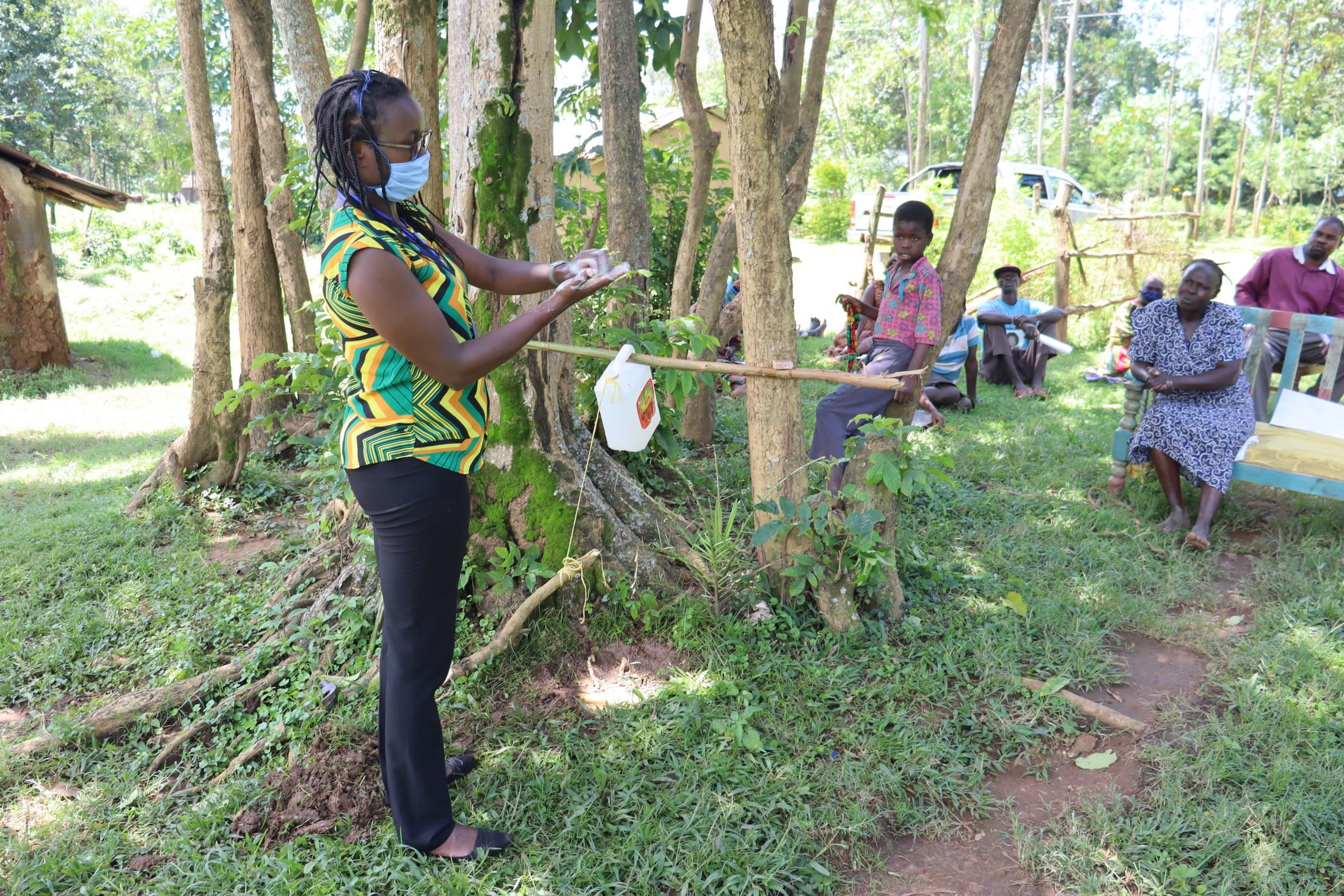This project is being implemented by our partner Western Water And Sanitation Forum, and includes the construction of a spring protection system and latrine sanitation platforms (sanplats).
Background Information
This unprotected spring is located in Imulama village, Shimanyiro sub location, Shisele location, Kakamega South District within Kakamega County. The spring serves over 58 households with a total population of 420 people out of which 205 are Men and 215 are women.
The water is used of drinking, cooking, watering animals and Brick making as an income generating activity. The source is unprotected and as a result people have to step in as they fetch the water, they aslo wash their faces,hands and clothes hence contaminating the water.
Those with animals they also bring them to drink water from the same source thus contaminating it further.
Sanitation is also wanting as many people do not have latrines and this was evident with open defecation around the site. Since the spring is unprotected, the faeces are washed into the water resulting to outbreaks of water borne diseases.
Hygiene practices are also poor amongst the community members with many people not washing their hands after toilet use and many compounds were unclean.Few people had dish racks, clothlines and traditional bathrooms.
The Mobilization Process of the Community
The process of sensitization and mobilization was similar to that of Luseka spring and organization activities targeted both the local leaders and the community members. This begun by sensitization of Kakamega county Commissioner, Assistant county commissioner of Malava and the County Minister of Environment, water and natural resources. They were briefed on the project intervention in their areas.
This was followed up by sensitization of the local administration in the location, sub location and village level. This was aimed at creating awareness on the projects intervention in the area and also selection of the key resource persons to be trained as PRAs.
The PRA Process
The PRA process was conducted with an objective of equipping participants with relevant skills of appraising the projects in the community and training on good leadership, management, monitoring and evaluation. Representation was drawn from opinion leaders, community members, and village administrators.
Mapping of the community resources was done to assist the community members identify the locally available resources within their community and contribute the same towards the project. This ensures ownership and sustainability of the project. The community calendar was also done in order to identify key events in the community like market days, holidays, public meeting days and markets days. This assisted in planning for trainings and other project activities.
The protection of the spring has already started. Digging of the drainage started on the 3rd week of March and when complete, it will serve over 65 households with a total population of 475 people out of which 220 are Men and 255 are women.
When it comes to sanitation, five community members around the spring have been identified, the pits sunk and Sanitation platforms have already been casted and are undergoing the curing period. The selection criteria was based on the most needy members of the community. Therefore five vulnerable members of the community that lack toilets will receive these sanitation platforms.This was done In order to prevent contamination of the water sources by faeces resulting from open defecation.
The Implementation of the WASH Trainings
The Water and Sanitation management committee training was conducted on 23rd and 24th March, 2015 to the committee members for Tsivaka spring. They were equipped with relevant skills on management and maintenance of their water spring, good governance, funds collection and record keeping.
A total number of 24 people were trained out of which 8 were males and 16 were females.
After training the participants were encouraged to establish structures of management and maintenance of the water points by fencing the water points, making cut off drainages and planting indigenous trees to conserve the water.
The committee was also urged to register with the Ministry of Social services so they can access devolved funds which will enable them engage in income generating activities and improve their livelihoods.
The Community Health workers were also selected around the springs and equipped with skills on health and hygiene promotion in villages in order to reduce incidences of water borne diseases. This was done on 25th and 26th of March, 2015. A total number of 17 people attended the training of which 5 were males and 12 were females. After trainings they were charged with responsibility of making home visits, public meeting and educate the community on practicing good hygiene practices, family planning and safe water handling in order to prevent water borne diseases.
Once the Sprint Protection was complete, the project was handed over to the community. Although WEWASAFO will continue to monitor the spring and stay in contact with the community over time to monitor the use and the flow of the spring. Thank you for your Support!
 Protected Spring
Protected Spring
 Rehabilitation Project
Rehabilitation Project
























